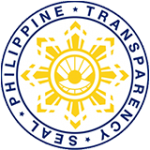HISTORICAL PERSPECTIVE OF THE PHILIPPINE EDUCATIONAL SYSTEM
Education in the Philippines has undergone several stages of development from the pre-Spanish times to the present. In meeting the needs of the society, education serves as focus of emphases/priorities of the leadership at certain periods/epochs in our national struggle as a race.
As early as in pre-Magellanic times, education was informal, unstructured, and devoid of methods. Children were provided more vocational training and less academics (3 Rs) by their parents and in the houses of tribal tutors.
The pre-Spanish system of education underwent major changes during the Spanish colonization. The tribal tutors were replaced by the Spanish Missionaries. Education was religion-oriented. It was for the elite, especially in the early years of Spanish colonization. Access to education by the Filipinos was later liberalized through the enactment of the Educational Decree of 1863 which provided for the establishment of at least one primary school for boys and girls in each town under the responsibility of the municipal government; and the establishment of a normal school for male teachers under the supervision of the Jesuits. Primary instruction was free and the teaching of Spanish was compulsory. Education during that period was inadequate, suppressed, and controlled.
The defeat of Spain by American forces paved the way for Aguinaldo’s Republic under a Revolutionary Government. The schools maintained by Spain for more than three centuries were closed for the time being but were reopened on August 29, 1898 by the Secretary of Interior. The Burgos Institute in Malolos, the Military Academy of Malolos, and the Literary University of the Philippines were established. A system of free and compulsory elementary education was established by the Malolos Constitution.
An adequate secularized and free public school system during the first decade of American rule was established upon the recommendation of the Schurman Commission. Free primary instruction that trained the people for the duties of citizenship and avocation was enforced by the Taft Commission per instructions of President McKinley. Chaplains and non-commissioned officers were assigned to teach using English as the medium of instruction.
A highly centralized public school system was installed in 1901 by the Philippine Commission by virtue of Act No. 74. The implementation of this Act created a heavy shortage of teachers so the Philippine Commission authorized the Secretary of Public Instruction to bring to the Philippines 600 teachers from the U.S.A. They were the Thomasites.
| Year | Official Name of Department | Official Titular Head | Legal Bases |
|---|---|---|---|
| 1863 | Superior Commission of Primary Instruction | Chairman | Educational Decree of 1863 |
| 1901-1916 | Department of Public Instruction | General Superintendent | Act. No. 74 of the Philippine Commission, Jan. 21, 1901 |
| 1916-1942 | Department of Public Instruction | Secretary | Organic Act Law of 1916 (Jones Law) |
| 1942-1944 | Department of Education, Health and Public Welfare | Commissioner | Renamed by the Japanese Executive Commission, June 11, 1942 |
| 1944 | Department of Education, Health and Public Welfare | Minister | Renamed by Japanese Sponsored Philippine Republic |
| 1944 | Department of Public Instruction | Secretary | Renamed by Japanese Sponsored Philippine Republic |
| 1945-1946 | Department of Public Instruction and Information | Secretary | Renamed by the Commonwealth Government |
| 1946-1947 | Department of Instruction | Secretary | Renamed by the Commonwealth Government |
| 1947-1975 | Department of Education | Secretary | E.O. No. 94 October 1947 (Reorganization Act of 1947) |
| 1975-1978 | Department of Education and Culture | Secretary | Proc. No. 1081, September 24, 1972 |
| 1978-1984 | Ministry of Education and Culture | Minister | P.D. No. 1397, June 2, 1978 |
| 1984-1986 | Ministry of Education, Culture and Sports | Minister | Education Act of 1982 |
| 1987-1994 | Department of Education, Culture and Sports | Secretary | E.O. No. 117. January 30, 1987 |
| 1994-2001 | Department of Education, Culture and Sports | Secretary | RA 7722 and RA 7796, 1994 Trifocalization of Education Management |
| 2001 – present | Department of Education | Secretary | RA 9155, August 2001 (Governance of Basic Education Act) |
The high school system supported by provincial governments, special educational institutions, school of arts and trades, an agricultural school, and commerce and marine institutes were established in 1902 by the Philippine Commission. In 1908, the Philippine Legislature approved Act No. 1870 which created the University of the Philippines.
The Reorganization Act of 1916 provided the Filipinization of all department secretaries except the Secretary of Public Instruction.
Japanese educational policies were embodied in Military Order No. 2 in 1942. The Philippine Executive Commission established the Commission of Education, Health and Public Welfare and schools were reopened in June 1942. On October 14, 1943, the Japanese – sponsored Republic created the Ministry of Education. Under the Japanese regime, the teaching of Tagalog, Philippine History, and Character Education was reserved for Filipinos. Love for work and dignity of labor was emphasized. On February 27, 1945, the Department of Instruction was made part of the Department of Public Instruction.
In 1947, by virtue of Executive Order No. 94, the Department of Instruction was changed to Department of Education. During this period, the regulation and supervision of public and private schools belonged to the Bureau of Public and Private Schools.
In 1972, it became the Department of Education and Culture by virtue of Proclamation 1081 and the Ministry of Education and Culture in 1978 y virtue of P.D. No. 1397. Thirteen regional offices were created and major organizational changes were implemented in the educational system.
The Education Act of 1982 created the Ministry of Education, Culture and Sports which later became the Department of Education, Culture and Sports in 1987 by virtue of Executive Order No. 117. The structure of DECS as embodied in EO No. 117 has practically remained unchanged until 1994 when the Commission on Higher Education (CHED), and 1995 when the Technical Education and Skills Development Authority (TESDA) were established to supervise tertiary degree programs and non-degree technical-vocational programs, respectively.
The Congressional Commission on Education (EDCOM) report provided the impetus for Congress to pass RA 7722 and RA 7796 in 1994 creating the Commission on Higher Education (CHED) and the Technical Education and Skills Development Authority (TESDA), respectively.
The trifocal education system refocused DECS’ mandate to basic education which covers elementary, secondary and nonformal education, including culture and sports. TESDA now administers the post-secondary, middle-level manpower training and development while CHED is responsible for higher education.
In August 2001, Republic Act 9155, otherwise called the Governance of Basic Education Act, was passed transforming the name of the Department of Education, Culture and Sports (DECS) to the Department of Education (DepEd) and redefining the role of field offices (regional offices, division offices, district offices and schools). RA 9155 provides the overall framework for (i) school head empowerment by strengthening their leadership roles and (ii) school-based management within the context of transparency and local accountability. The goal of basic education is to provide the school age population and young adults with skills, knowledge, and values to become caring, self-reliant, productive and patriotic citizens.
DEPED MANAGEMENT STRUCTURE
To carry out its mandates and objectives, the Department is organized into two major structural components. The Central Office maintains the overall administration of basic education at the national level. The Field Offices are responsible for the regional and local coordination and administration of the Department’s mandate. RA 9155 provides that the Department should have no more than four (4) Undersecretaries and four (4) Assistant Secretaries with at least one Undersecretary and one Assistant Secretary who are career service officers chosen among the staff of the Department.
In 2015, the Department underwent a restructuring of its office functions and staffing. The result of which was the Rationalization Plan for the new organizational structure. Details of the new structure are further explained in DO Series 2015 No. 52, also known as the New Organizational Structures of the Central, Regional, and Schools Division Offices of the Department of Education.
At present, the Department operates with four (4) Undersecretaries in the following areas:
- Curriculum and Instruction
- Finance and Administration
- Governance and Operations
- Legal and Legislative Affairs
Four (4) Assistant Secretaries are assigned in the following areas:
- Curriculum and Instruction
- Finance and Administration
- Governance and Operations
- Legal and Legislative Affairs
Supporting the Office of the Secretary (OSEC) at the Central Office are the different strands, services, bureaus, and divisions.There are five (5) strands under OSEC:
- Curriculum and Instruction
- Finance and Administration
- Governance and Operations
- Legal and Legislative Affairs
- Strategic Management
Five (5) attached agencies:
- Early Childhood Care and Development (ECCD) Council
- National Book Development Board (NBDB)
- National Council for Children’s Television (NCCT)
- National Museum
- Philippine High School for the Arts
Three (3) coordinating councils:
- Adopt-a-School Program (ASP) Coordinating Council
- Literacy Coordinating Council (LCC)
- Teacher Education Council (TEC)
At the sub-national level, the Field Offices consist of the following:
- Seventeen (17) Regional Offices, and the Autonomous Region in Muslim Mindanao (ARMM*), each headed by a Regional Director (a Regional Secretary in the case of ARMM).
- Two hundred twenty-one (221) Provincial and City Schools Divisions, each headed by a Schools Division Superintendent. Assisting the Schools Division Offices are 2,602 School Districts, each headed by a District Supervisor.
Under the supervision of the Schools Division Offices are 62,605 schools, broken down as follows:
- 49,209 elementary schools (38,648 public and 10,561 private)
- 13,396 secondary schools (7,976 public and 5,420 private)
*ARMM is included in the budget of the Department on the following:
Creation of teaching and non-teaching positions;
Funding for newly-legislated high schools;
Regular School Building Program; and
Certain foreign-assisted and locally-funded programs and projects.


